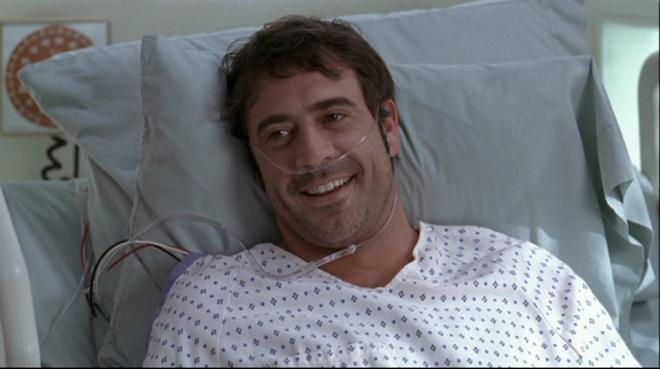 |
| Who cut the LVAD wire? (lol jks) |
In this current day and age, new discoveries are constantly found and the world moves one step further in technological advancements. Technology not only enables us to learn more about the world around us, but also allows us to educate more about ourselves, and our human body. Discoveries and developments in medical technology have permitted doctors, surgeons, specialists, and researchers in the medical field to help cure and operate on known diseases and disorders. Besides helping to save lives, these medical breakthroughs also allow many people to function normally every day. Needless to say, medical technology plays a major role in our world today.
Biphasic Cuirass Ventilation (BCV) is a method of ventilation which controls the respiratory cycle (both inspiratory and expiratory phases). Named after the body-armour worn by medieval soldiers, BCV entails the patient to wear a shell or cuirass which is attached to a power unit. As it is Biphasic, controlling both the inspiratory and expiratory phases, the BCV is able to ventilate at a high frequency from six to 1200 cycles per minute and also achieve higher tidal volumes. These two factors allow higher minute ventilation and therefore, able to complete ventilation with both normal and sick lungs.[1]
 |
| Biphasic Cuirass Ventilation |
Ventricular assist devices (VAD) is a circulatory device used to replace partially or completely the function of a failing heart. Not to be confused with a pacemaker or artificial hearts, VADs are designed to aid the right (RVAD) or left (LVAD) ventricle or both (BiVAD). VADs are normally used to assist a patient’s heart while he/she waits for an available heart for a heart transplant. [2]
 |
| Ventricular Assist Device |
A recent technology developed for your digestive system, Capsule Endoscopy allows your doctor to examine and evaluate the lining of the duodenum, jejunum, and ileum, the middle part of your gastrointestinal tract. It is used to search for a cause of bleeding from the small intestine, detecting polyps, inflammatory bowel disease, ulcers, and tumours of the small intestine. This technology involves the swallowing of a pill sized video capsule called an endoscope. It has its own lens and light source and when swallowed, travels through your intestine and the images taken can be viewed on an external monitor. [3]
 |
| Capsule Endoscopy |
Calcitonin, is a hormone produced by humans to reduce blood calcium. Discovered by Dr. Douglas Harold Copp in 1961, his investigation of the regulation of calcium in the body led to his discovery of Calcitonin. It is used therapeutically for the treatment of osteoporosis and hypercalcemia. Calcitonin can also be used as a tumour marker for medullary thyroid adenocarcinoma, a form of thyroid cancer. [4]
 |
| Calcitonin |
This past century, many scientists, doctors, specialists, and researches have contributed many discoveries to medical technology. It is amazing how we are able to live the future our ancestors wanted and predicted. As years pass by, medical technology will continue to improve and maybe our grandchildren will be able to live the future we predict.



1 comments:
I looked at the caption of the first picture and wondered if I watched Grey's Anatomy if if I'd get it. But then I dismissed it, and read your awesome post!
That machine that helps you breathe looks scary. Not because of the tube sticking out of your chest, but the fact that you're kind of part robot in a sense.
Very informative post Debbie! I personally cannot wait to see what the medical world comes up with next!
Post a Comment